Air Conditioning with PCM CFD Simulation
$120.00 $60.00 Student Discount
- The problem numerically simulates air conditioning with phase change materials (PCM) using ANSYS Fluent software.
- We design the 2-D model by the Design Modeler software.
- We Mesh the model by ANSYS Meshing software.
- The mesh type is Structured, and the element number equals 45000.
- We perform this simulation as unsteady (Transient).
- We use the Solidification and Melting model to define phase change materials.
To Order Your Project or benefit from a CFD consultation, contact our experts via email (info@mr-cfd.com), online support tab, or WhatsApp at +44 7443 197273.
There are some Free Products to check our service quality.
If you want the training video in another language instead of English, ask it via info@mr-cfd.com after you buy the product.
Description
Air Conditioning with Phase Change Material CFD Simulation by ANSYS Fluent
The present problem simulates Air Conditioning with PCM using ANSYS Fluent software.
In general, phase change materials are materials with organic compounds that can absorb and store large amounts of latent thermal energy.
Thermal energy storage in these materials is achieved during the phase change process (solid phase to liquid or vice versa); So that when changing phase from solid to liquid, it absorbs heat from the room environment (causes cooling during hot hours) and returns the heat to the environment when changing phase from liquid to solid (causes heating during hours).
The present model is designed in two dimensions using Design Modeler software. The model includes a rectangular domain with dimensions of 0.09 m * 0.5 m. Four specific areas for defining phase change material are distinguished within this computational area.
The model meshing has been done using ANSYS Meshing software, and the mesh type is Structured. The element number is 45000.
Also, due to the nature of the present problem, a transient solver is enabled to perform the simulations.
Air Conditioning with PCM Methodology
The solidification and melting model is used in this simulation to define phase change materials. The phase change material studied in this simulation is rubidium-rt20 which has a density equal to 1480 kg/m3, a specific heat capacity equal to 2500 j.kgK, a thermal conductivity equal to 0.6 W/mK and viscosity equal to 0.164428 kg/ms.
To determine phase change materials, it should be noted that the maximum temperature at which the solid phase temperature is (solidus temperature) is 295.15 K, and the minimum temperature at which the liquid phase is dominant (liquidus temperature) is 297.15 K. And the pure solvent melting heat is defined as 150,000 j.kg-1.
The present model has a section for inlet flow in its upper part and a section for outlet flow in its lower part. Airflow with a flow rate of 0.018 kg.s-1 and a temperature of 302.15 K enters the model horizontally and exits at a pressure equal to atmospheric pressure.
The simulation was performed in transient format with a time step similar to 0.5 s. Moreover, the RNG k-epsilon model and energy equation are enabled to solve turbulent fluid equations and calculate temperature change within the domain, respectively.
PCM Conclusion
At the end of the solution process, two-dimensional contours related to the liquid’s pressure, velocity, temperature, and mass fraction are obtained.
Given that the phase change material’s working process is time-dependent, the transient solver is used, and the results are obtained at different times of the simulation process to get the results over time.
According to the temperature and mass fraction of the liquid, it can be said that the number of liquid production increases over time. The images also show that pressure and velocity stabilize over time and simultaneously have approximately the same values.

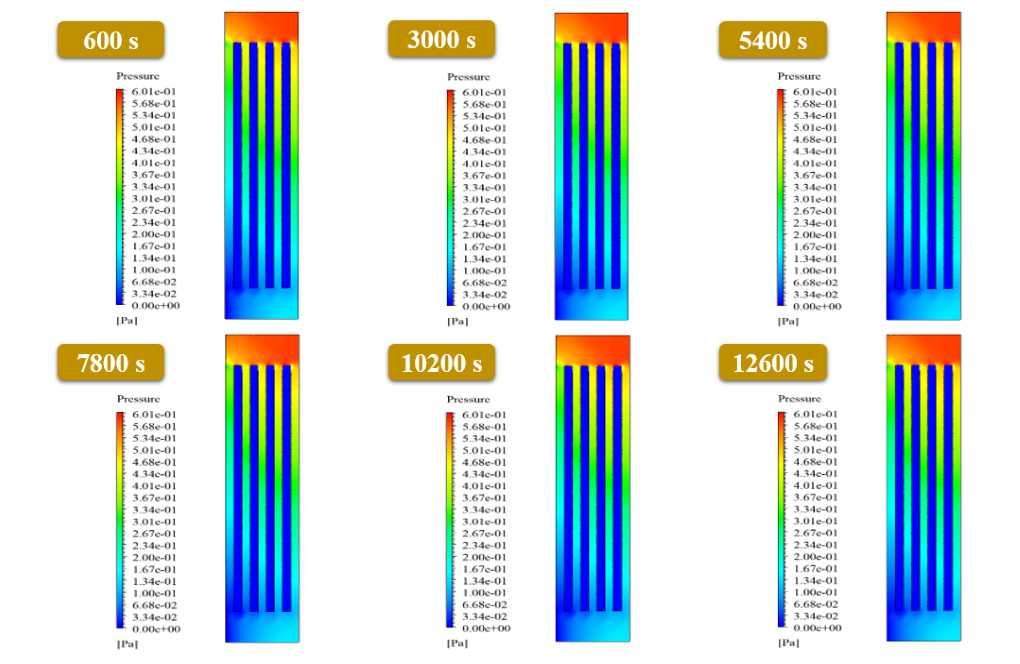
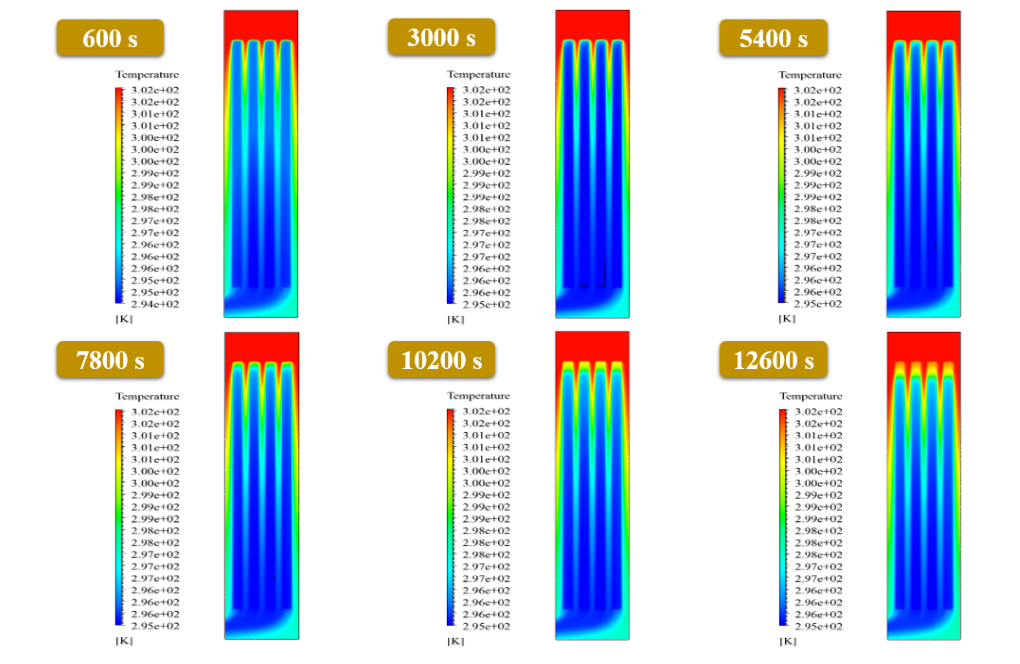
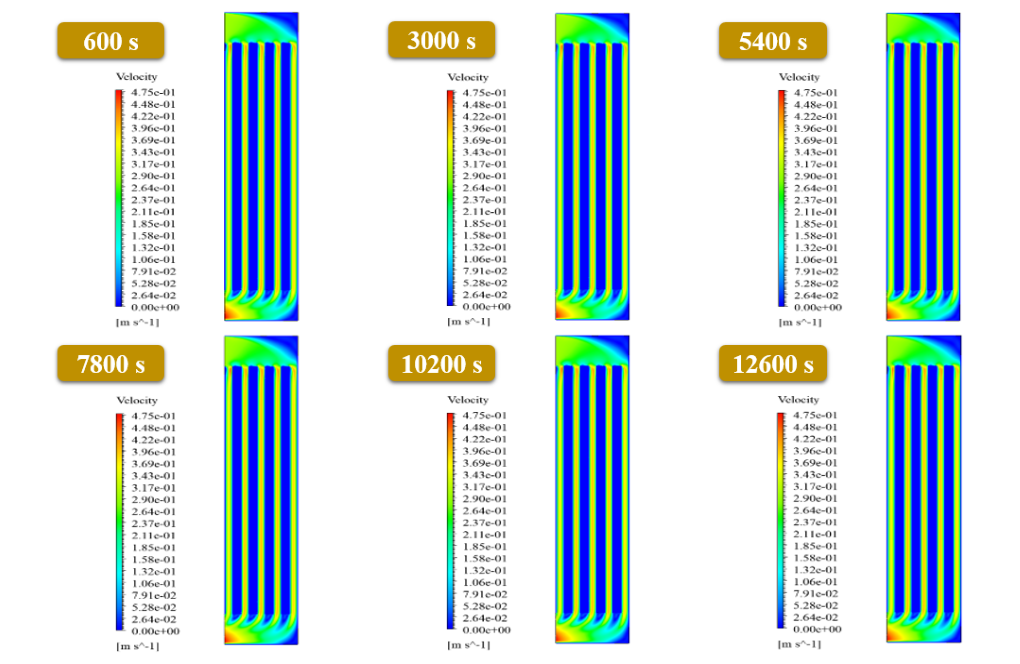
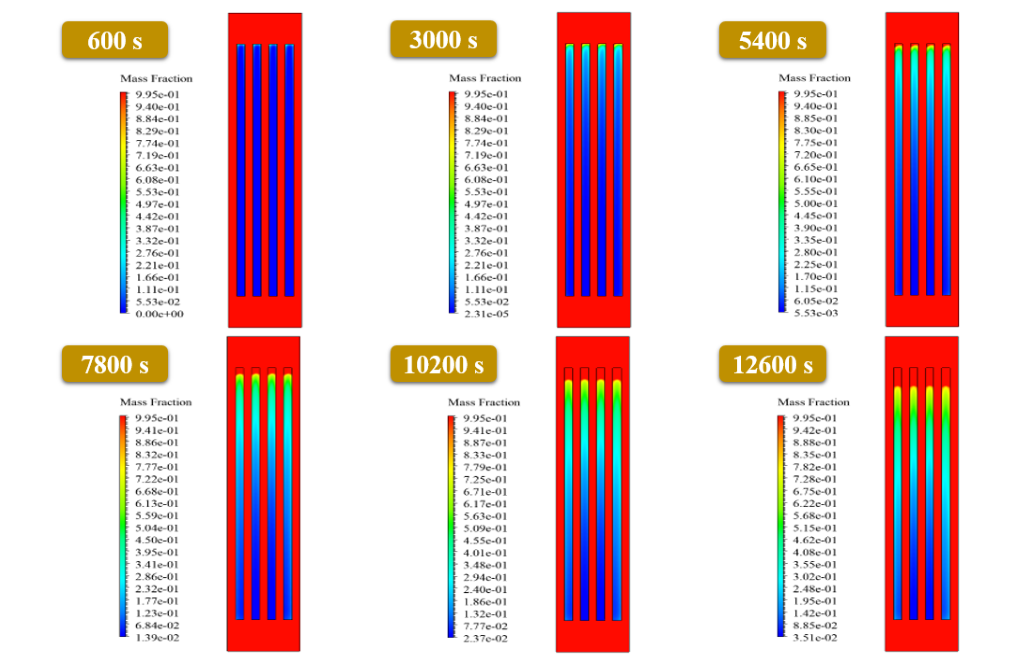

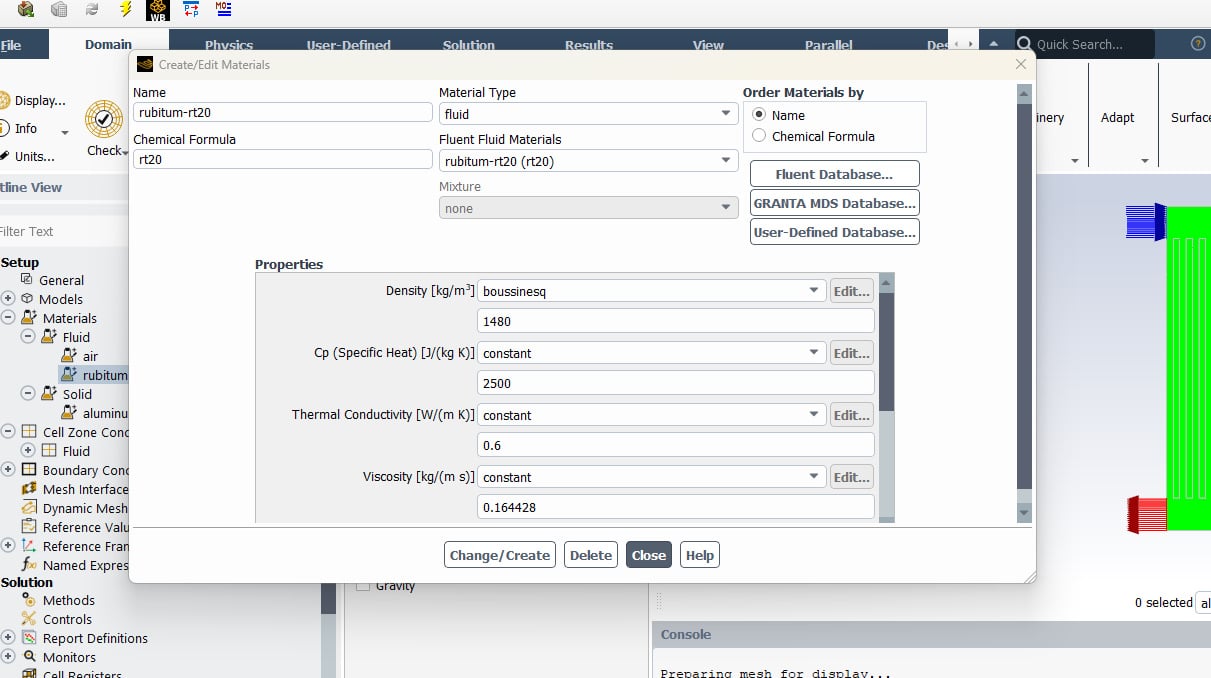
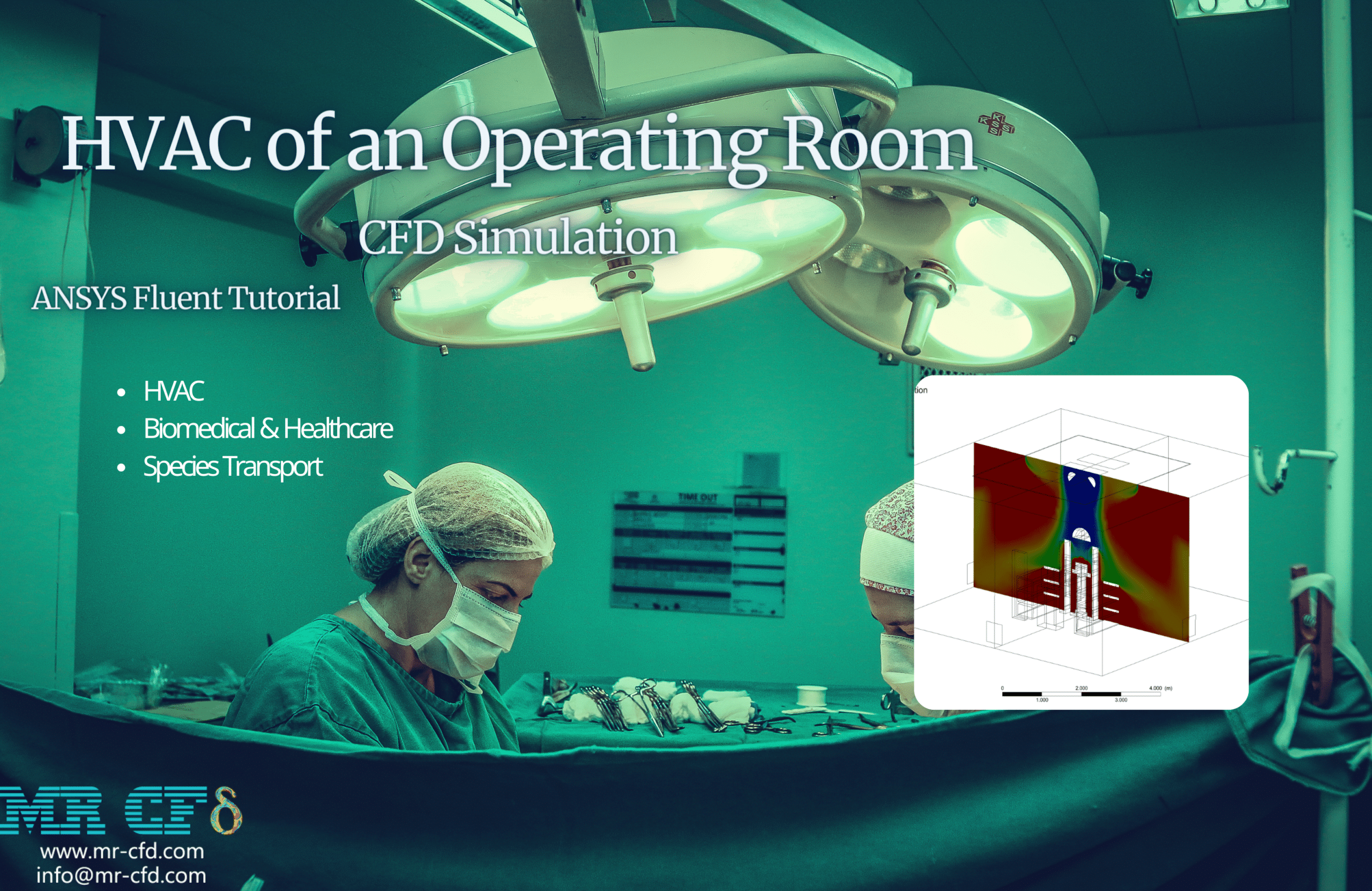
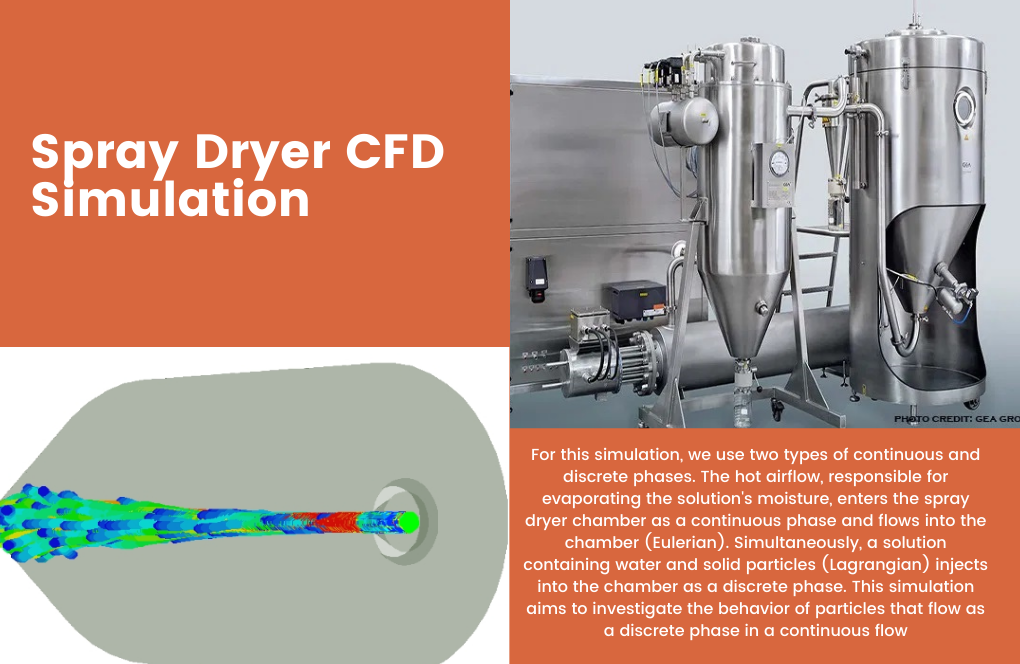
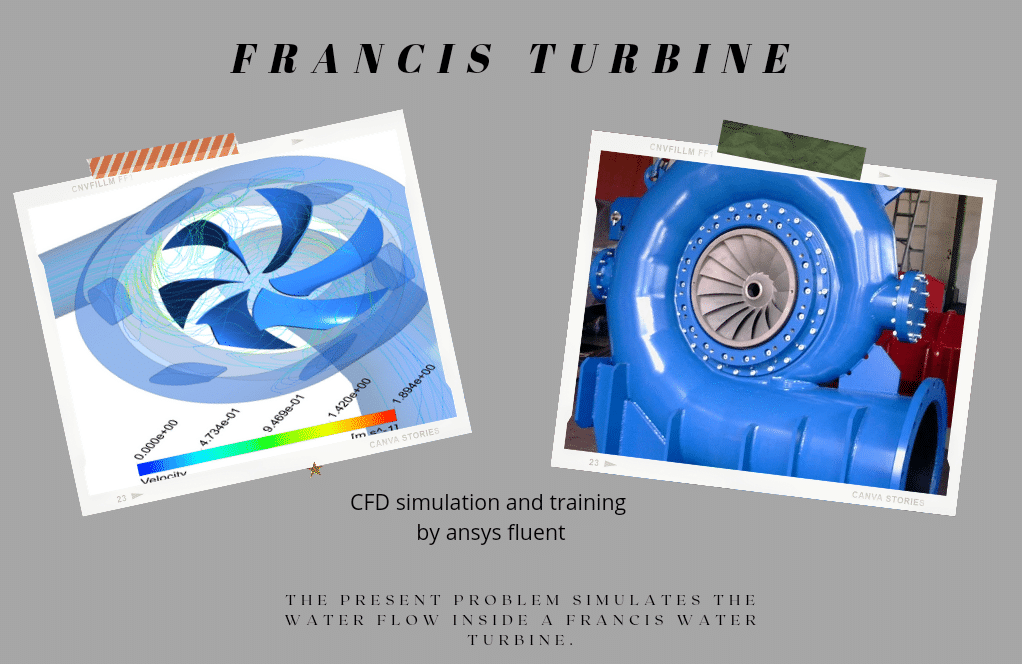

Sedrick Flatley –
The methodology suggests a strong focus on the phase change process. Could you clarify how the simulation accounts for natural convection flows that might occur as the PCM melts and solidifies?
MR CFD Support –
In this simulation, natural convection flows are taken into account by enabling the RNG k-epsilon model to solve turbulent fluid equations. Turbulence models help predict fluid movement accurately during both melting and solidification, capturing the buoyancy-driven flows that occur due to density changes as the PCM absorbs or releases heat.
Alysson Abbott –
I’ve found the dynamic aspect of PCM in AC very engaging! Great product for understanding thermal properties in real-life applications.
MR CFD Support –
Thank you for your positive feedback! We’re delighted to hear that our product provided you with a deeper understanding of phase change materials in air conditioning systems. We always aim to deliver valuable insights into practical applications with our simulations.
Marianne O’Connell PhD –
The tutorial for the Air Conditioning with PCM CFD Simulation was fantastic! It clarified how PCM can be incorporated into air conditioning systems for more efficiency. The explanation of the simulation setup and the presentation of results over time provided a great understanding of the material’s behavior. Thank you for such a detailed guide!
MR CFD Support –
Thank you for your positive feedback! We’re thrilled to hear about your satisfaction with the Air Conditioning with PCM CFD Simulation tutorial. It’s our pleasure to provide comprehensive guides to help users understand complex concepts more easily. If you have any more questions or need further assistance, feel free to reach out!
Cora Schneider –
I am deeply fascinated by this study of air conditioning with PCM. Could you kindly illustrate how exactly the flow rate of the incoming air influences the performance and efficiency of the PCM system?
MR CFD Support –
The flow rate of incoming air can significantly affect the performance and efficiency of a PCM-based air conditioning system. A higher flow rate might increase the heat transfer coefficient, thereby enhancing the heat absorption by the PCM during the melting process. This could potentially lead to faster cooling of the environment. In contrast, a lower flow rate may result in a slower rate of heat transfer and thus, slower cooling. The exact impact of flow rate on the system’s performance would require a detailed analysis of the simulation data over time, capturing the dynamics of phase change and air movement within the space.
Baylee Hodkiewicz PhD –
How accurate is this simulation in predicting the behavior of a room with PCM-based passive air conditioning?
MR CFD Support –
This simulation uses advanced numerical methods and accurate models of the room and the PCM to provide a highly accurate prediction of their behavior. However, like all simulations, it should be used in conjunction with other engineering analyses and not as a sole decision-making tool.
Werner Turner –
How does the use of phase change material (PCM) contribute to passive air conditioning?
MR CFD Support –
PCM helps in passive air conditioning by storing and releasing thermal energy during the process of phase change. This helps in maintaining a comfortable room temperature even during peak load conditions, reducing the reliance on active cooling systems.
Prof. Eileen Keebler –
Can this simulation model different types of PCMs?
MR CFD Support –
Yes, this simulation can model different types of PCMs. You can define the specific properties of the PCM, such as its melting point and latent heat, in the simulation setup.
Mrs. Joanny Barton MD –
Great detail in explaining phase change materials for air conditioning. Impressive results with the heat absorption!
MR CFD Support –
Thank you for recognizing the details in our simulation on Air Conditioning with Phase Change Material. We’re delighted to see that our efforts to clearly explain thermal dynamics and the PCM effectiveness have impressed you!
Priscilla Stark I –
The simulation outcome at different stages was illuminating. However, I wonder if using an RNG k-epsilon model influences the accuracy of the simulation compared to other turbulence models?
MR CFD Support –
In utilizing the RNG k-epsilon model, you’ve touched on an essential point regarding the fidelity of turbulence predictions. This model provides an advantage in handling complex flows with strong recirculations and swirls, potentially yielding more accurate results in cases like air conditioning systems with PCM than some other models. That being said, each turbulence model has its strengths and context of applicability, and the RNG k-epsilon’s robust handling of energy dissipation can indeed enhance the simulation’s prediction where appropriate.
Dagmar Ernser Sr. –
I’m thrilled with how this simulation made it easy to understand the workings of PCM in air conditioning. Great job on visualizing the data at different time points.
MR CFD Support –
Thank you for your positive feedback. We’re pleased to hear that the simulation met your expectations and provided a clear visual understanding of phase change materials in air conditioning systems. Your appreciation motivates us to continue delivering high-quality educational products.
Amir Lockman –
This product review is all about how well the air conditioning system with PCM performed in simulations. The detailed conclusion shows a successful setup. Great job!
MR CFD Support –
Thank you for your positive feedback on our Air Conditioning with PCM CFD Simulation tutorial. We’re thrilled that you found the setup and results satisfactory and professionally explained. If you have any further questions or need assistance with similar projects, please don’t hesitate to reach out.
Miss Cynthia Auer –
The Air Conditioning with PCM simulation seems quite comprehensive. Can this setup be scaled to simulate a full room scenario, and if so, would the current mesh handle that efficiently or would it need adjustments?
MR CFD Support –
In simulating a full room scenario, the setup would likely require scaling in terms of the geometry, boundary conditions, and material properties to accurately represent the different environmental conditions and larger space. The current mesh may not be sufficient for such a scenario, as it is optimized for a smaller two-dimensional model. For a full room simulation, a new meshing strategy would have to be implemented to ensure accurate results, capturing all relevant thermal effects within the entire room efficiently. Computational resources and time might also increase due to the complexity and size of the scaled model.
Liliane Considine –
I’m impressed by the detailed setup of the Air Conditioning with PCM Simulation. Are the results indicating that the PCM can effectively reduce air temperature during peak heat times?
MR CFD Support –
Thank you for your kind words! Yes, indeed, the simulation results demonstrate that the phase change material actively absorbs heat from the environment during its phase change from solid to liquid, which effectively reduces air temperature during peak heating hours. Thus, indicating that PCMs can be an efficient method for passive cooling in air conditioning systems.
Susanna Collier –
This review only praises the product 🙂
MR CFD Support –
Thank you for your kind words! We are thrilled that you are satisfied with our Air Conditioning with PCM CFD Simulation product. It’s great to hear our solutions are appreciated.
Christine Sporer –
I am extremely impressed with how this software handles the intricate PCM properties and phase transition. Definitely a powerful tool for thermal management and innovation!
MR CFD Support –
Thank you for your positive feedback! We’re pleased to hear that our simulation tool has met your expectations in handling complex phase change material processes. Our goal is always to provide accurate and efficient simulations for thermal management solutions. If you have any further inquiries or need support in your future projects, please don’t hesitate to reach out.
Leonard Donnelly –
Great explanation on the methodology and results for the Air Conditioning with PCM CFD Simulation. It’s impressive how PCM materials like rubidium-rt20 can absorb and release thermal energy, facilitating both cooling and heating. The detailed simulation approach used by ANSYS Fluent and your results provide valuable insights into the effectiveness of PCMs in air conditioning. Wonderful work, MR CFD Company!
MR CFD Support –
Thank you for your kind words! We’re thrilled to hear that our Air Conditioning with PCM CFD Simulation provided you with valuable insights. It’s great to see our customers recognize the effectiveness of using phase change materials for thermal management. If you have any more questions or need further assistance, feel free to reach out to us!
Mr. Colin Runolfsson –
I am thrilled by how this PCM simulation in air conditioning can potentially save energy. Was this methodology also designed to maximize energy efficiency in various climate conditions?
MR CFD Support –
Thank you for your appreciation! The simulation methodology incorporates thermal energy storage through phase change materials which inherently support energy efficiency by leveraging latent thermal energy absorption and release. While the provided data does not specify climate condition tailoring, PCM provides advantages across varying temperatures due to its phase change characteristics.
Isadore Brakus –
I’m impressed with the air conditioning CFD simulation that includes PCM. Can you tell me more about the advantage of using PCM in this context?
MR CFD Support –
Thank you for your compliment on the air conditioning CFD simulation using a phase change material (PCM). The advantage of employing PCM in air conditioning systems is the capacity to absorb excess heat during peak temperatures, which improves thermal comfort with reduced energy consumption. By efficiently storing and releasing thermal energy during phase transitions, PCM can help to level temperature fluctuations and reduce the load on conventional cooling systems.
Dr. Christine Cassin Sr. –
I’m really impressed with the level of detail in the PCM CFD simulation training. The use of rubidium-rt20 and the careful consideration of its properties as a phase change material demonstrates a sophisticated approach to climate control. Excellent work on developing a comprehensive scenario.
MR CFD Support –
Thank you for your positive feedback! We’re elated to hear that you appreciate the detail and depth of our Air Conditioning with PCM simulation tutorial. It’s our goal to provide comprehensive and realistic learning scenarios for our users. Your words truly encourage us to keep delivering high-quality content!